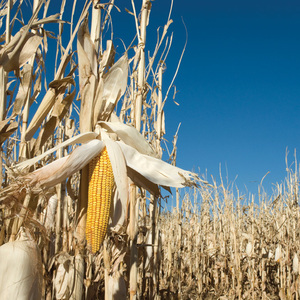WASDE: Corn use for ethanol to rebound in 2021-“22

May 12, 2021
BY Erin Krueger
The USDA predicts corn use for ethanol will increase in 2021-’22, according to projections included in its latest World Agricultural Supply and Demand Estimates report, released May 12. The outlook for domestic corn production was also raised, as was the expected season-average corn price.
The USDA currently projects the U.S. corn crop at 15 billion bushels for 2021-’22, up from last year on higher area and return to trend yield. The yield projection of 179.5 bushels per acre is based on a weather-adjusted trend assuming normal planting progress and summer growing season weather, estimated using the 1988-2020 time period. With beginning stocks that are down sharply from a year ago, total corn supplies are forecast to increase modestly to 16.3 billion bushels.
Total U.S. corn use in 2021-’22 is forecast to decline relative a year ago as greater domestic use is more than offset by lower exports. Food, seed and industrial use is projected to increase 220 million bushels, to 6.6 billion.
Corn use for ethanol is projected to increase based on expectations of higher U.S. motor gasoline use. The USDA currently predicts 5.2 billion bushels of corn will go to ethanol production in 2021-’22, up from 4.975 billion bushels in 2020-’21 and 4.857 billion bushels in 2019-’20 and approaching the 5.378 billion bushels that went to ethanol production in 2018-’19.
Advertisement
Advertisement
The outlook for corn feed and residual use is unchanged, as a larger crop is offset by increased corn used for ethanol and higher expected season-average farm prices received by producers.
U.S. corn exports are forecast to decline 325 million bushels in 2021-’22. Unfavorable production prospects are forecast to limit exports out of Argentina and Brazil during 2020-’21, supporting U.S. exports during the first half of 2021-’22. The USDA said that a 335-million-bushel increase in combined exports for Ukraine and Russia in 2021-’22, however, is expected to increase competition for the U.S., reducing the forecast U.S. share of global corn trade from a year ago.
With total U.S. corn supply rising and use declining, 2021-’22 U.S. ending stocks are expected to be up 250 million bushels from last year. Stocks relative to use, at 10.2 percent, would be above a year ago, but still below the average seen during 2016-’17 to 2019-’20.
Advertisement
Advertisement
The season-average corn price received by producers in 2021-’22 is projected at $5.70 per bushel, up $1.35 from a year ago when much of the crop was marketed at lower prices.
Globally, world corn production is forecast record high, with the largest increases for the U.S., Brazil, China, Ukraine and Argentina. Global corn use is expected to grow 3 percent, with foreign consumption up 3 percent. Global corn imports are projected to increase 3 percent. Notable increases in corn imports include the EU, Turkey, Iran, Japan and Mexico. Global corn ending socks are up 3 percent from a year ago, with expected increases for the U.S. foreign countries. Excluding China, corn ending stocks are up 10 percent relative to a year ago.
For China, total coarse grain imports are forecast at 46.3 million tons, up 3.1 million tons from 2020-’21, and if realize, would be a record high. Expectations are for continued high corn and other energy feedstock prices in China, despite an increase in corn production. Corn imports are for forecast 26 million tons higher for the country.
Related Stories
The USDA’s National Agricultural Statistics Service on June 30 released its annual Acreage report, estimating that 83.4 million acres of soybeans have been planted in the U.S. this year, down 4% when compared to 2024.
SAF Magazine and the Commercial Aviation Alternative Fuels Initiative announced the preliminary agenda for the North American SAF Conference and Expo, being held Sept. 22-24 at the Minneapolis Convention Center in Minneapolis, Minnesota.
Scientists at ORNL have developed a first-ever method of detecting ribonucleic acid, or RNA, inside plant cells using a technique that results in a visible fluorescent signal. The technology could help develop hardier bioenergy and food crops.
The 2025 International Fuel Ethanol Workshop & Expo, held in Omaha, Nebraska, concluded with record-breaking participation and industry engagement, reinforcing its role as the largest and most influential gathering in the global ethanol sector.
TotalEnergies and Quatra, the European market leader in the collection and recycling of used cooking oil, have signed a 15-year agreement beginning in 2026, for the supply of 60,000 tons a year of European used cooking oil.
Upcoming Events










